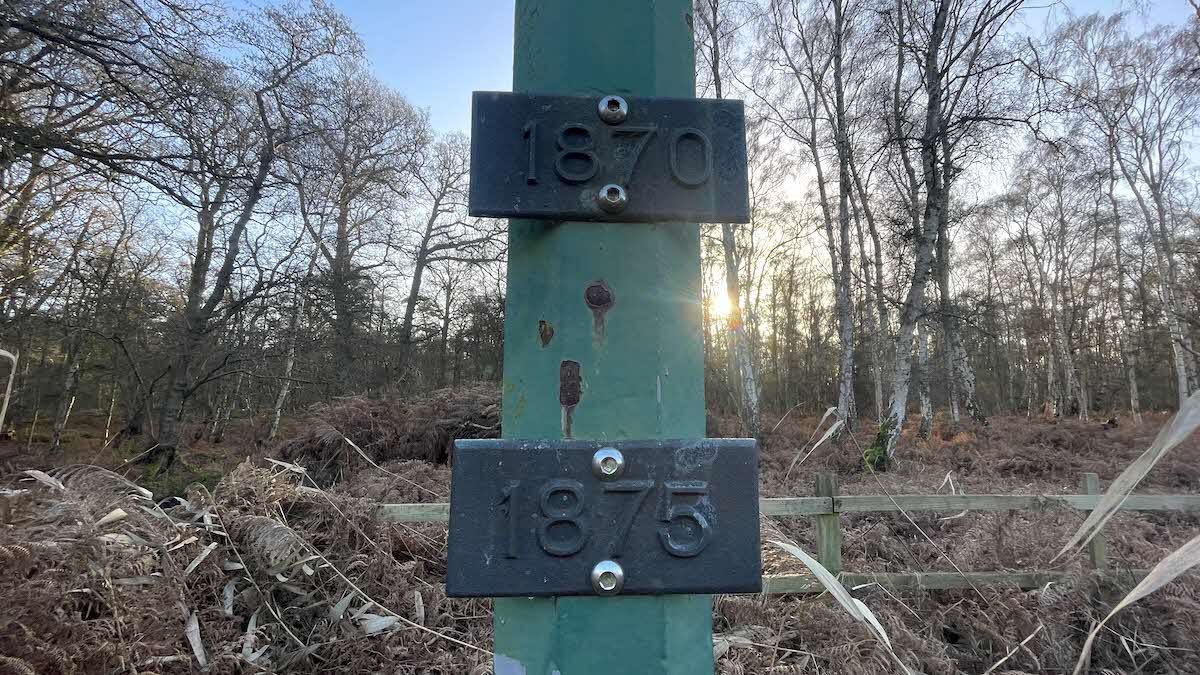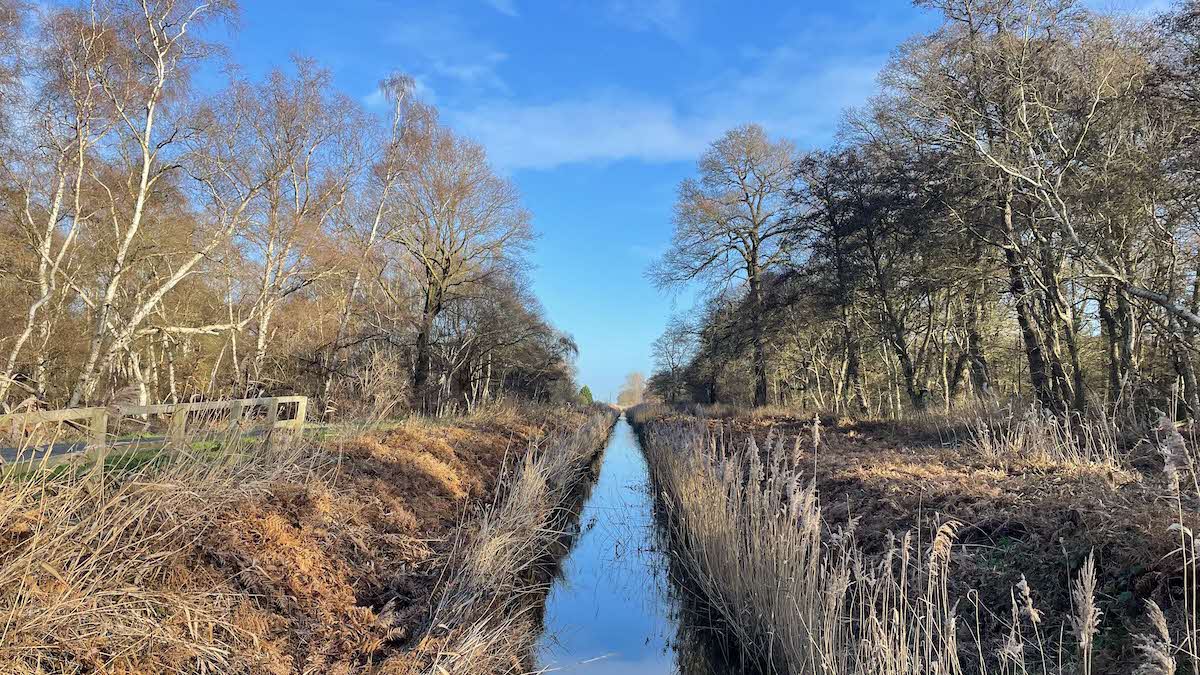Book a Club campsite
Explore hundreds of Club campsites and plan for stays throughout the year. There are plenty of locations to choose from, search and book today.
Book nowJonathan Manning ventures below sea level on the Great Fen and reports on plans to restore it
 Old peat pits filled with water to form Burnham’s Mere
Old peat pits filled with water to form Burnham’s Mere Contour lines rule like kings in walking guidebooks, indicating uphill walks that will be rewarded with far-reaching views. We’re informed of peaks with 15-county panoramas and mountain summits offering spellbinding vistas. But what about, at the other end of the spectrum, the flatlands that boast no hint of a rise all the way to the horizon? In this vertically challenged kingdom, the ‘Holme Posts’ on Holme Fen, south of Peterborough, stand at 2.75m below sea level – the bottom-most point in the United Kingdom without going underground or requiring a snorkel.
The first iron post dates from 1851 – it replaced a timber pile that was driven deep into the peat just before the nearby Whittlesey Mere was drained in 1848 – and the second was added in 1957, about six metres to the north-east.
The top of the first post was initially level with the ground, but as pumps drained the land, like squeezing water from a sponge, the ground level fell. Within 25 years the ground had dropped about two metres, and it took only another five years to sink by a further metre. Today, the tops of the posts stand about four metres above the earth, with date markers indicating the ground’s height in 1870, 1875 and 1880.
 Posts record the ground level over the years
Posts record the ground level over the yearsVictorian sketches show flotillas of sailing boats on Whittlesey Mere, and crowds of skaters on its frozen surface in winter. This was once the largest lake in southern England, at more than three miles wide and six miles long, but the richness of the peat soil, the so-called ‘black gold’, meant the Mere was far more valuable as farmland than as a centre of reed harvesting, recreation, wildfowling and fishing.
Today, Holme Fen is the northern outpost of the ambitious Great Fen project – a partnership between the Environment Agency, Huntingdonshire District Council, Middle Level Commissioners, Natural England and The Wildlife Trust for Bedfordshire, Cambridgeshire and Northamptonshire – which aims to restore 14 square miles of land between here and Woodwalton Fen to wild fen over a period of 50 to 100 years.
The restoration will recreate wetland habitats and attract endangered fen wildlife, such as bitterns and otters, back to the area. Common cranes have already returned, and last year a pair of marsh harriers bred on the restoration land for the first time. Holme Fen is a National Nature Reserve and Site of Special Scientific Interest, its damp conditions boasting 500 different types of fungi, as well as an impressive array of dragonflies, butterflies and amphibians.

There’s no ear-popping descent as I head below sea level to start my walk, but my recent drive has already showcased the epic sky above this pancake-flat landscape. The vast arable fields of the region, sliced into geometric patterns by ditches, dykes and drainage channels, have seen the area overlooked as a walking destination – an apparently featureless waterland with an underlying bronchial cough. But the epic sense of space and dramatic weather systems that scurry over these productive soils have a certain otherworldliness. As the actor and president of the Great Fen project, Stephen Fry, said, “The fens stand as one of the most misunderstood, neglected and extraordinary features of the British landscape. Not to mention beautiful.”
On a bright January day, Holme Fen is doing its best to impress below an endless blue sky. The paths that criss-cross the nature reserve seem well drained, although scores of wooden boardwalks provide tell-tale evidence that the going could get messy. Both gauge posts have been left high and dry by the sinking fen; in fact, the foundations of the original are now so exposed that guy-rope hawsers hold the post upright.
A waymark points me along a path by an arrow-straight dyke, feathery reeds dancing in the breeze. The occasional molehill of jet-black soil exposes the agricultural treasures beneath my feet, although Holme Fen is largely woodland rather than arable. Despite the drainage efforts, Holme Fen remained too wet and boggy to farm, and trees were allowed to colonise the land. There are occasional oaks, yews and cedars, but silver birches dominate the forest, the dark shadows between their mast-like, white trunks creating a barcode effect.
 Prime walking country
Prime walking countryA second waymark signals a turn away from the dyke and into the woodland, where copper-coloured bracken lies either side of the path. Navigation is surprisingly easy, paths seemingly plotted like the grid system in an American city. Occasional heathland clearings carry echoes of the New Forest, but it’s much easier here to find your way.
Tucked into the undergrowth, I spy a large metal cauldron, a former charcoal bin that dates from the Second World War. Contemporary accounts recall how the felling of trees to make charcoal created clearings that soon filled with nightingale song in the spring. A few yards further on, a knee-height barrier sits across a shallow channel, designed to trap and disperse water across the woodland floor. Safeguarding the peat helps store the carbon trapped in these wetlands, which the Great Fen project claims will save an estimated 325,000 tonnes of CO2 from being released each year – equivalent to the annual emissions of tens of thousands of households.
Completing the trail, I discover Burnham’s Mere, a large lake that formed when water filled the pits where peat had been dug. Swans and moorhens preen and squabble in a waterscape that feels much more like I imagine the original Whittlesey Mere to have looked. There will be more of these pools and ponds as the Great Fen develops, and wherever there’s abundant water there’s abundant life – wildflowers, fungi, birds and butterflies. A nature safari with far-reaching views and no gravity to defy – who needs to climb to the top of a hill for an amazing walk?
For details of walks in the area see greatfen.org.uk